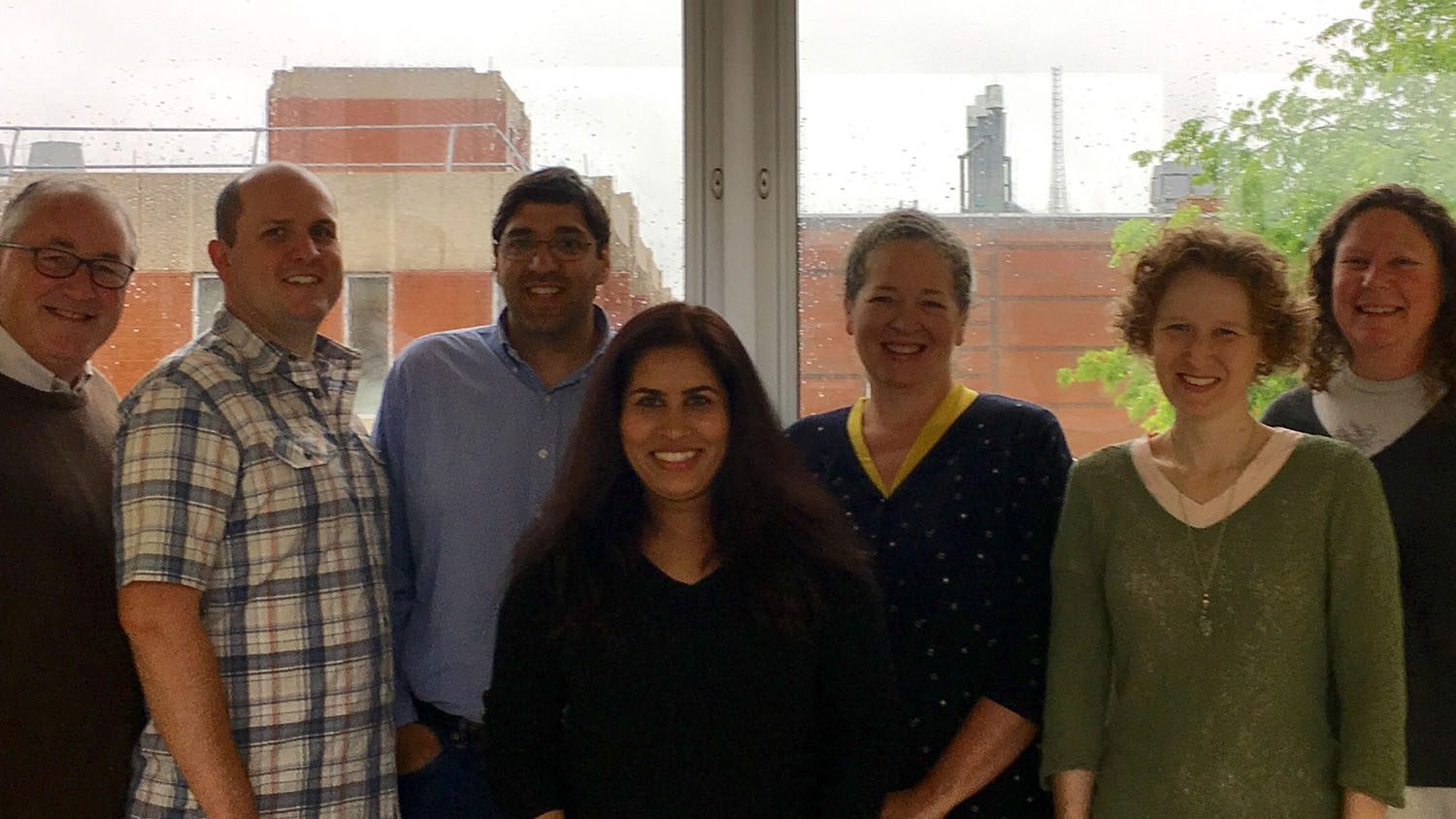
“It’s revolutionizing wheat breeding in the public sector in the south—well, everywhere. This lab is revolutionizing public wheat breeding in the south and eastern United States.”
Operating within NC State’s Department of Crop and Soil Sciences, Gina Brown-Guedira’s USDA-ARS Eastern Genomics Lab has emerged as a key hub in public wheat breeding in the eastern and southern US.
Recent investments in lab infrastructure from new ARS funding to the lab through efforts of the National Wheat Improvement Committee and American Malting Barley Association, Inc. and an agreement with NC State for genotyping technology development, mean increased levels of genotyping capacity, data handling and support.
Gina Brown-Guedira‘s USDA-ARS Eastern Regional Small Grains Genotyping Laboratory group is a team that pulls together. Paul Murphy of Crop and Soil Sciences’ wheat breeding program is one of the lab’s closest collaborators. “The genomic predictions that the lab is working on now is a seamless amalgamation of the best phenotypic data, the best the field information can provide, and the best that the genotypic information can provide, and it’s unbelievably empowering for a wheat breeder like me in the trenches, developing varieties. Before it was available, everything had to be learned from very expensive field and greenhouse evaluations.”
Credit for success is due to the mix of federal and state employees, scientists, professors and technicians. When Gina joined the department in 2004, funding had just been received for setting up a regional genotyping lab. At that time, private industry investment in wheat was limited. She explains, “There were all of these technologies that were being used in crops like corn and soybeans that weren’t being applied in the small grains. Our lab works mostly with wheat, but also with barley and oats.” Lobbying by the National Wheat Improvement Committee representing work in wheat improvement, and the US Wheat & Barley Scab Initiative encouraged both public and private funding for a lab that could provide DNA technology for wheat improvement.
At the beginning, there was only Gina, working with a technician and one graduate student. “We started out looking at single genes that were important for one or two large effect traits.”
Now the team includes Brown-Guedira and Muprhy with support staff Kim Howell, Jared Smith, and Jeanette Lyerly in addition to multiple graduate students and post-docs, including recent PhD student Martin Sarinelli who developed genomic prediction models now used by southeastern wheat breeders. Advances in wheat genomics mean that it’s possible to do high throughput evaluation of causal markers for more than 50 genes of major effect and to access data for DNA variants across the whole genome.
“How meaningful it would be to have this sort of thing for all crops programs at NC State, not just wheat and barley. “ Gina says. “It’s been a boon for small grains program. We’re regionally focused, but would like the breeders at NC State who are working on other crops to have access to the same sort of resources.”
“Right now, the primary client is the wheat breeder. Genomic prediction would not only make cultivar development more efficient, but could reduce the amount of time it takes to get a cultivar in a farmer’s hand. The return on investment in terms of breeder’s money and time spent in the field is going to be much higher. “
Paul Murphy adds, “It’s incredibly empowering, because I can now know how my varieties can perform, not just for yield and other traits, but against diseases and insects that we don’t even have in North Carolina. It’s revolutionizing wheat breeding in the public sector in the south—well, everywhere. This lab is revolutionizing public wheat breeding in the south and eastern United States.”
“I’m a wheat breeder for over thirty years, and it’s definitely the biggest technological leap in the whole thirty years I’ve been around.”
Visit the Eastern Regional Small Grains Genotyping Laboratory.
Story by Kaki Carl